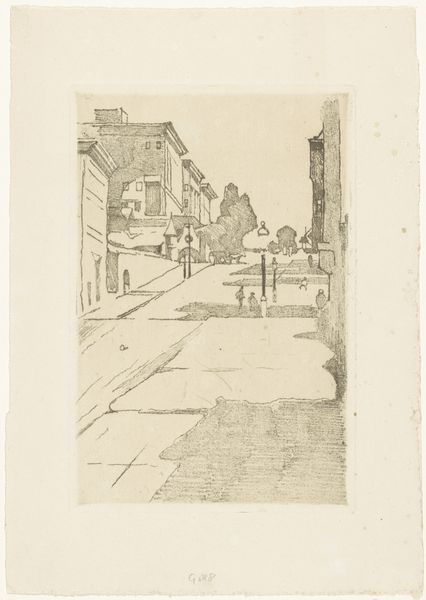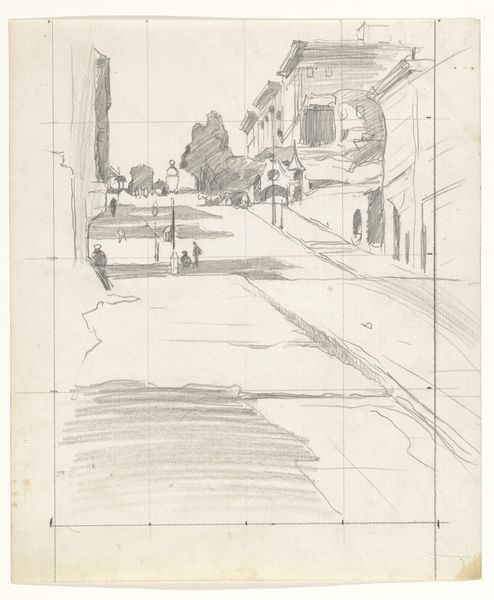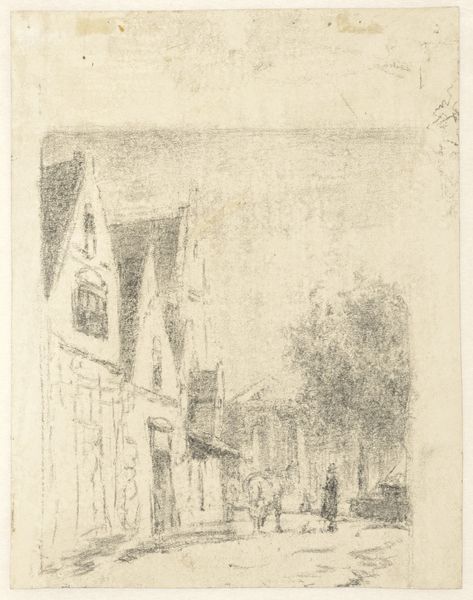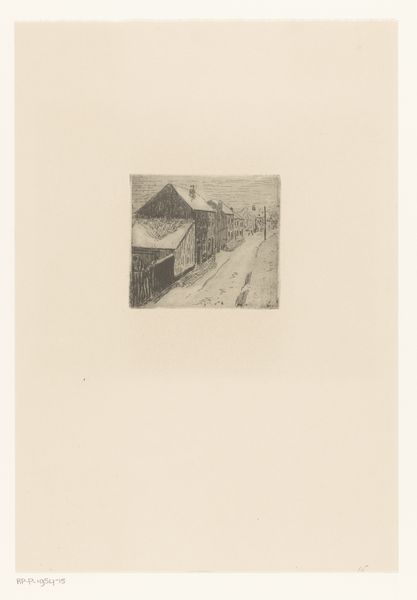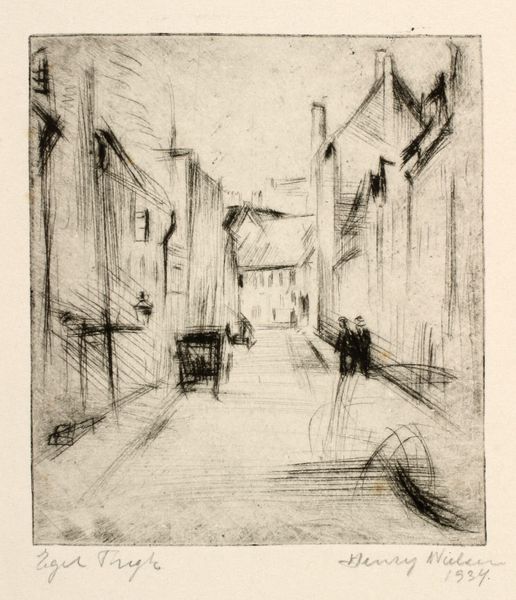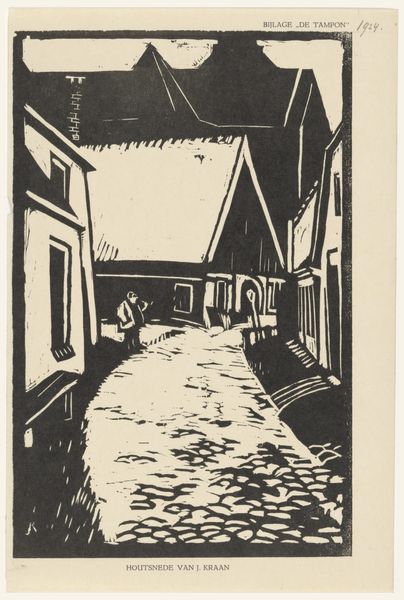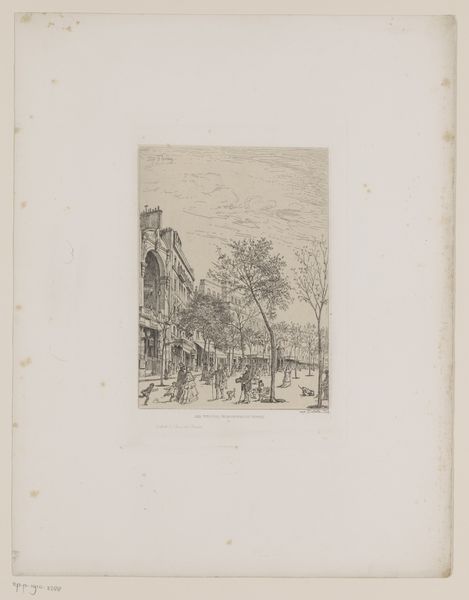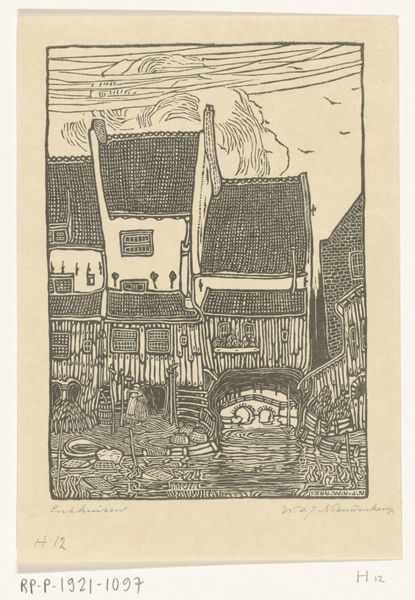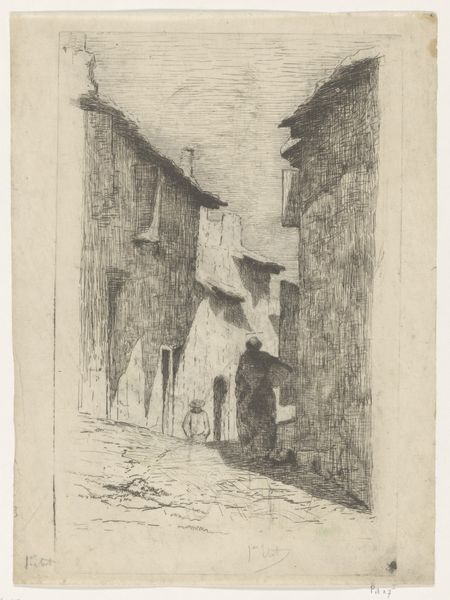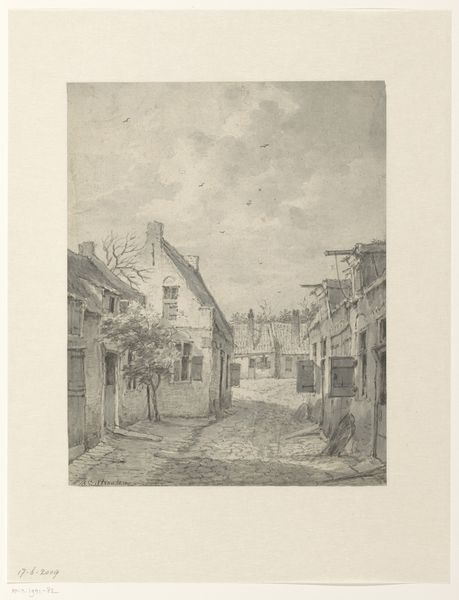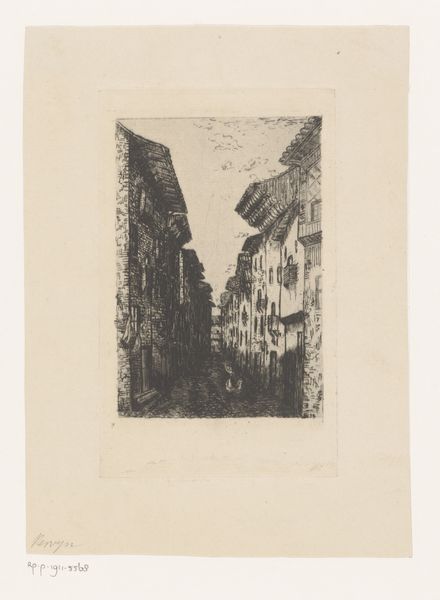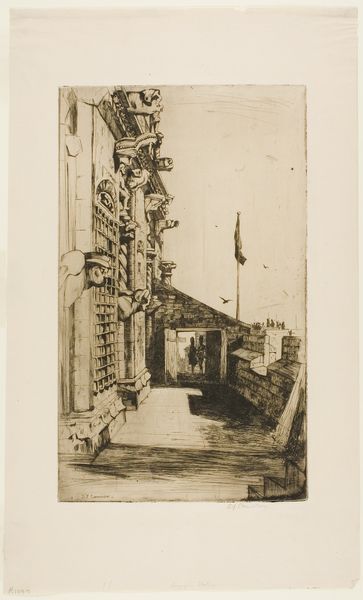
Gezicht op Maison Street en het Fairmont hotel in San Francisco c. 1915 - 1919
0:00
0:00
willemwitsen
Rijksmuseum
Dimensions: height 240 mm, width 160 mm
Copyright: Rijks Museum: Open Domain
Curator: At first glance, this etching appears so subdued, almost melancholic in its palette, despite its depiction of a sunny San Francisco street. Editor: Indeed. Let's dive into it. This is Willem Witsen's "Gezicht op Maison Street en het Fairmont hotel in San Francisco," created circa 1915-1919, now held at the Rijksmuseum. Witsen, though Dutch, seems quite taken with capturing this American scene. Curator: What I find intriguing is how the sharp contrast evokes the heavy weight of shadows. There is a tangible mood to it. It feels lonely, and full of suspense, but, yet, also evokes strong memory in the mind of the viewer, as all black and white photography tends to do. Editor: I agree. The print encapsulates the era's fascination with modern city life. Note how the looming presence of the Fairmont hotel symbolizes progress and urban development reshaping San Francisco's skyline. At that time the hotel was recently reconstructed after a huge fire destroyed it after an earthquake in 1906, changing for good the history of the city. The steep angle of the street creates a sense of drama, drawing the eye upwards towards it and making it a strong social marker in the artwork. Curator: Witsen's mastery lies in using etching to translate light and shadow into powerful emotional cues. The choice of stark lines lends a sort of haunting aura to what would typically be seen as an otherwise unremarkable day, a perfect contrast between modernism and impressionism. Editor: Absolutely. The everyday subject reflects the rise of industrialization and urban expansion and the changing class dynamics as seen through the perspective of an external observer. It also challenges the viewers in the old continent, inviting them to consider how this phenomenon has manifested and played out. The city transforms, and Witsen turns it into an experience. Curator: It serves as a poignant snapshot of a specific moment, embedding within its lines the rapid shifts and emotions tied to that period, resonating even now. I believe, to this day, it speaks about the social development that occurred not just at the moment in that area, but worldwide, after that tragic event. Editor: Well said. An engaging image of the evolution of our shared urban experience, framed in time.
Comments
No comments
Be the first to comment and join the conversation on the ultimate creative platform.
